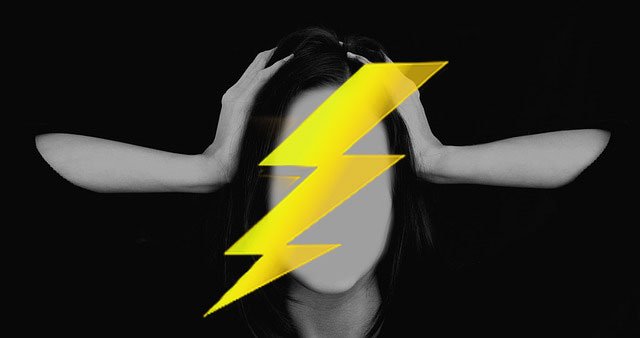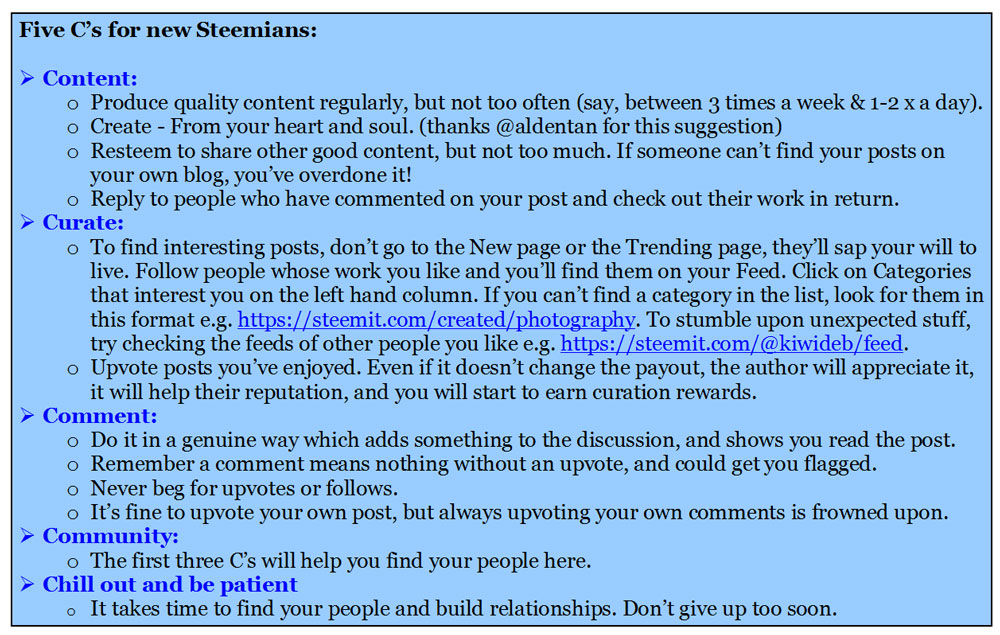If a ketogenic diet can prevent seizures, could other diet styles cause them?
What would these other diet styles look like anyway?
I don’t know whether some diets can cause seizures or not, but I have some thoughts. Walk through them with me, and see if my logic is sound. If it is, it might give some ideas to some Steemian parents with a suffering child. Or even shed light on whatever is going on for you. And please, if you have any ideas, throw them in the pot!

Ok, so you all probably know that I’m into real, whole foods and think that for most people a good balance of animal and plant foods is best.
What I want to talk through today is the macro nutrient ratios of protein, fat and carbs – particularly in the context of fuel for the brain. So let’s look at four different types of diet – balanced, high carb/low fat, high fat/low carb and high protein – and compare how they provide fuel.
Let’s start with Balanced Diet
Actually, I don’t believe there is any such thing, as we all have different needs in the types of foods that work for us, and the ratios. But for a baseline, I’m going to use the Zone diet, popularised by Dr Barry Sears in the late 90s. His theory was that if you ate in the right ratio, it would balance blood sugar, reduce inflammation and get you in “The Zone”.
Without going into all the complicated calculations of how much to eat and when, I’m just going to look at the ratios which are 30% protein / 30% fat / 40% carbs. So if you were eating 2000 calories a day, that would be 600 calories each from protein and fat, and 800 calories from carbs. To calculate grams of each, we need to know that protein and carbs have 4 calories per gram, and fat has 8. So for 2000 calories, we’d need to eat:
• Protein – 30% = 150 grams
• Fat – 30% = 67 grams
• Carbs – 40% = 200 grams

Some websites call this a low carb diet, but to me it’s moderate carbs, and more than I would eat myself! For me a balanced diet is a bit different, being a bit lower in carbs and a bit higher in fat:
• Protein – 30%
• Fat – 40%
• Carbs – 30%
High carb / low fat (Standard American diet aka SAD)
A handful of decades ago, when fat became (unfairly) demonised, the mainstream advice was to restrict fat to under 20% of calories and get most of your calories from carbs. The food pyramid we’re all familiar with was developed in the 70s.
Let’s look at a typical food diary one of my clients might have filled out. Remember this is someone trying to eat healthy, and not have me judge them for eating too much junk, so they cleaned things up for the week they kept records.
• Breakfast – ¾ cup oats (made into porridge), ¼ cup skim milk, a banana, ¾ glass orange juice
• Morning snack – Starbucks orange cranberry muffin
• Lunch – Tuna salad sandwich, apple
• Afternoon snack – Hersheys chocolate bar
• Dinner – 150gm skinless chicken breast, ¾ cup rice, 117gm steamed carrot, 150gm broccoli
• Dessert – ½ cup berries, 1 pot low fat yoghurt
This lines up pretty well with the food pyramid recommendations. I threw this into My Fitness Pal, and it came to 2001 calories, with this breakdown:
• Protein - 93 grams – 18%
• Fat – 54 grams – 24%
• Carbs – 308 grams – 61% - note that 147 grams or 29% is categorised as sugar!
The good thing here is that there is plenty of glucose to fuel the body and brain, but the downside is that unless you’re an endurance athlete, there is too much fuel and not enough protein for building and repairing the body, or fat for making hormones.
I call it a recipe for diabetes! And think how much worse it would look if they were eating junk food! It could cause all manner of health problems, but I don’t think it is likely to cause seizures.
Now let’s look at keto
The goal with a ketogenic diet is to use fat as the body’s primary fuel, instead of glucose (a simple sugar). Once the body has been trained to burn fat, it becomes quite efficient. And the bonus is that a by product of burning fat is the production of ketones, which can also be used as fuel. The brain especially loves ketones as fuel.

Before the development of drugs for epilepsy, the standard of care was a ketogenic diet. It is a very high fat, lowish protein, very low carb diet. People go into ketosis at different levels of fat in the diet, but some typical ranges might be:
• Protein – 15-30%
• Fat – 60-75% - or even up to 80% in the case of epilepsy
• Carbs – 5-10%
The difficulty with this is that eating that much fat is not easy or palatable, and compliance is a problem.
High protein / low carb
In the case of someone who had blood sugar issues and needed to watch their carbs, but was unable to tolerate fats, a highish protein diet would be the default. Let’s see what happens if we replace the SAD with a diet consisting only of meats, vegetables and berries, as was the case with the child in question.
To get 1994 calories (so adult sized portions), I came up with this:
• Breakfast – 2 pork chops, 1.5 cups sweet potato, 2 cups cauli, 1 cup berries
• Morning snack – jerky made from 50gm reindeer meat
• Lunch – 150gm lamb, 2 cups butternut squash, 2 cups lettuce, 1 cup berries
• Afternoon snack – jerky made from 50gm reindeer meat
• Dinner – 300gm chicken drumsticks, 1 cup sweet potato, 234gm steamed carrot, 150gm broccoli
• Dessert – 2 cups berries
Which translates to:
• Protein – 161 grams - 32%
• Fat – 64 grams - 29%
• Carbs – 209 grams - 40%
Interestingly enough, this came out to almost exactly the Zone ratios. But what if the fattier meats (eg the chicken drums) couldn’t be tolerated? Then the meats would be leaner, the protein higher and fat lower. And what if the sweet potato and butternut couldn’t be tolerated and the vegetables had to be lower carb? The carbs would be lower and the protein higher.
This might be not a problem in a healthy person, with everything working properly, as the liver is able to convert protein to sugars. But if that process isn’t working properly, the brain could be deprived of fuel.
So this is the nutritional scenario that, to me, could potentially contribute to seizures, if the foods were limited enough. I think it was the doctor’s best guess as the cause of the seizures.
What’s the solution?
In the case, I think the chosen solution has been to add in corn, teff and some fruits, which were not being eaten before, to increase the carbs available. (Is that right @momone?)
Another possibility, if the seizures continue, is to see if the fats can be increased and head more towards a ketogenic diet. But until fats can be digested better, this is not an option.
If anybody has any other thoughts on this scenario, please share them. @cristi – any thoughts? @robmenzies – are you around?
I don’t if there’s anything new here for the family in question, but it may help someone else.
Thanks for reading and don’t hesitate to ask questions or make suggestions
Check out @woman-onthe-wing’s #makeithealthy project
Images by myself, @sift666 or from Pixabay, unless otherwise stated.
Follow me for more health, nutrition, food, lifestyle and recipe posts. For an archive of 2016 & 2017 posts, by category, see my last post of 2017.

Contact me in SteemitChat to ask about one on one nutritional coaching or EFT (Emotional Freedom Technique) sessions by Skype. (Then put a comment on my most recent post, so I know to find you.) Steem, other altcoins or Paypal accepted.
If you’re from New Zealand (Aotearoa) and are looking for other kiwis, use #teamnz as one of your tags // check out other posts with #kiwi or #teamnz tags // follow @teamnz // or join the South Pacific channel on Discord. There is an old list of kiwis on this post.

I don't have any suggestions but I do find the way science, not just nutritional science but also brain and digestion, are being better used to realize one diet is not for everyone and we need to really put effort into finding our own personal balance. I have been testing foods myself since January and I'm still trying to find the right ratios.
Good luck with your study.
Agree that it's not so simple as one size fits all. We all need to be aware and tolerant of each other's differences, I think.
Very enlightening diet management. The ketogenic diet sounds interesting for fat people losing weight.
Yes, a lot of people are using it for fat reduction, but it can have all sorts of other good effects too. Not right for everybody though.
howdy @kiwideb and greetings from Texas..I really liked your breakdown of the different diets and so accurate. I don't know anything about what causes seizures so I don't have anything to add on that topic but I wanted to salute you for an excellent post!
Thanks!
You just got a Team NZ upvote!

This is a curation bot for TeamNZ. Please join our AUS/NZ community on Discord.
For any inquiries/issues about the bot please contact @cryptonik.